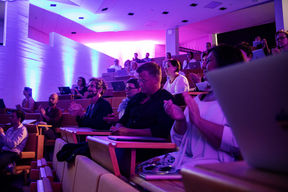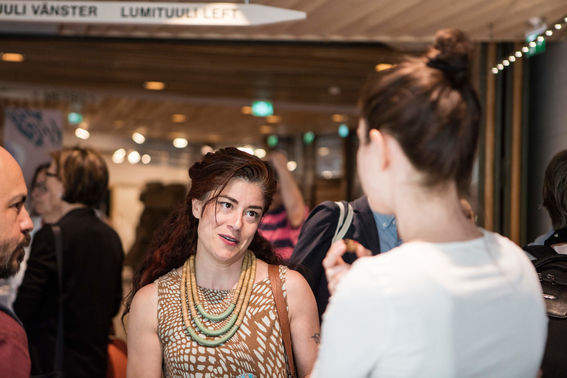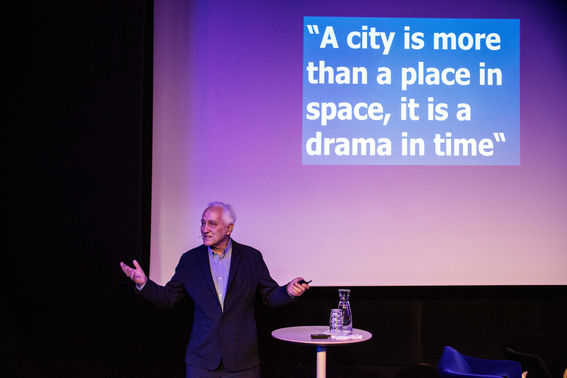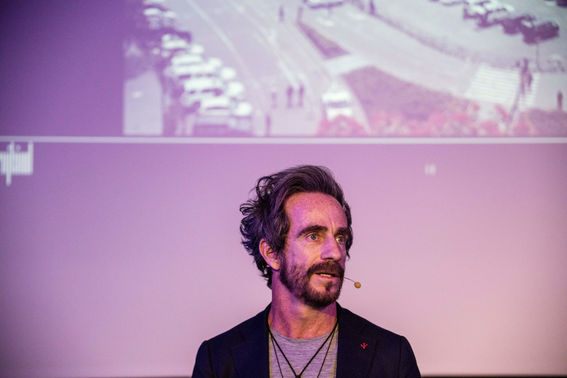
“Aalto University’s campus can become open to everyone and anyone”, Antti Ahlava, VP of Campus Development at Aalto University, introduces Aalto University’s campus development plans to the audience at “Hook’18: Campus of the future” event held 30 May 2018 in Dipoli.
Ahlava continues to present the future plans for the campus as it is transforming from a satellite campus to an integrated city. “It’s not possible everywhere but here we can closely collaborate with companies. Our cross-disciplinary programmes have created innovation through collaboration. Soft symbiosis between university led activities, voluntary activities organized by our students and collaboration activities by our business partners create a unique combination to promote innovation”, Ahlava says.
Space requirements change over time
Aalto University’s campus in Otaniemi could contain a lot more activities in the future. Compared to the centre of Helsinki, Otaniemi is equal in size. However, the idea is not just to build more, but to also have social activities to turn this area into a liveable, attractive area.
“Traditionally universities are divided into separate school units but in Aalto we’ve transferred into research clusters instead to better serve the focus on interdisciplinary research. We’ve turned all our ground floor areas into open, communal spaces, like art galleries, restaurants as workspaces as well as reservable project spaces for students and researchers”, Ahlava explains.
Use of space will develop over the years as various building projects and city planning projects, like Keilaniemi region and Tapiola region will shape Otaniemi’s area and user needs. Ahlava comments on the next steps: “We will focus on the everyday life at campus, what participatory events on campus we can launch. Emerging architecture, urban design and sustainable development are the drivers of our future campus.”

Design visions for Aalto Campus and beyond - İdil Gaziulusoy
Cities are significant intervention points for climate change action. World’s cities are responsible for up to 70 per cent of greenhouse gas emissions while occupying just two per cent of its land (UN Habitat, 2011).
İdil Gaziulusoy, Assistant Professor in Sustainable Design at Aalto University, presented various alternatives for Aalto University campus derived from student projects. The students explored various approaches based on roles of design in sustainability transitions thinking, a discipline Gaziulusoy has researched previously.
There are always trade-offs
Gaziulusoy shares the most important aspect of the exercise: “The research made the teams realize that they don’t know what sustainable scenario is the best and that there can be multiple scenarios at work at the same time. Understanding the seeds of change is important, since that’s where the change will sprout from.”
The main idea was to teach students how to unpack potential scenarios so that they know what political values they might represent through them. The students proposed ideas on topics as varied as clean food and food labs, an alternative “Aalto currency” to drive local economy, undivided ecosystems for all fauna to move around seamlessly, a self-sufficient Otaniemi, new ways of energy and food production, the whole campus as a sustainability hub, students and staff coming together to solve real-life problems and seeing shopping malls not so much for the need for services but as centres of connection.

Creating compelling landscapes – Charles Landry
“One of the biggest questions is that how people are sucked into places. Do they come back? Do others come back? What is the balance between them?”, Charles Landry, urban researcher and author, begins his keynote. It important to look for zones of encounters when planning a campus for different user groups.
“When we think of campuses, you can see the planning and non-planning, that urbanity, how things just happened”, Landry says. There are different ways of planning a campus. In Bologna, the city was there first and the university grew along it, until over time they grew into an organic entity. In Otaniemi, however, Aalto University is building a city out of a campus.
Campus is more than a place, it’s a drama in time
It is then useful to think of what kind of options Aalto University campus has. Options and choices depend on the application as well as what is considered meaningful and valuable by people. When there’s a critical mass of people, the number of options and connections tends to grow. Often a connection starts from little fragments and then grows into something deeper.
The connections are both physical and non-physical, so it is necessary to look into what anchors people to a place. What are the stories they tell each other? How do people identify with the places? Landry finishes his presentation by sharing his hopes for the future of Aalto campus: “I hope that Aalto is both cool and un-cool. Slightly mad, slightly conventional. Slightly traditional, slightly new. Maybe in the future there is no word “campus”, maybe it’ll be called Aaltos?”

Shared responsibility – Michel Rojkind
Architecture is not just about creating something beautiful but also something that gives back to the community and provides a space for it. Michel Rojkind, Creative and founding partner at Rojkind Arquitectos, explains that his design strategy is based on “reprogramming the program” and designing for other things to happen in addition to what is stated in the design brief. “We bring experts in different fields to broaden the perspective of what a project needs to do in today’s society”, Rojkind says.
The strategy of shared responsibility focuses on creating socially responsible projects by engaging diverse interest groups and establishing new collaboration and linkages among experts and participants. “What if a transnational company would actually give something back to the community? Nestlè needed a new building and the end product was a chocolate museum. What can you give back?”, Rojkind poses a question.
Reframe for a more flexible and sustainable built environment
“Push stronger. When money is not enough, meaningful things matter more. What does a shared economy mean in this sense?”, Rojkind challenges the audience. According to him it is not just about completing the right project but also seeing that the project is used to its full potential.
“Give community space and the opportunity to occupy the space. We didn’t win prizes because of the architecture but because of the people who make the building into a platform full of living possibilities”, Rojkind elaborates on his philosophy.
By reclaiming the space back to the community, it is possible to create something that will engage and reward for years to come. Only time will tell how the Aalto University community will choose to occupy and enliven the spaces on campus in the future.
Read more news

A! Walk-Nature connection: Walk, pick, discuss
The afternoon adventure on Lehtisaari offered more than just a walk in the forest; it sparked conversations about renewed appreciation for the simple pleasures of life and the beauty of the Finnish wilderness...
Campus for people, plants and pollinators
The Otaniemi campus nature is managed with respect to biodiversity and the characteristic species of habitats.Summmer break in HR service point and new opening hours starting from 6 August 2024
HR service point is closed on 28 June - 5 August 2024. New opening hours are tuesday - thursday at 12.00 - 15.00 starting from 6 August 2024.Please note that the opening hours will change starting from 6 August 2024.
